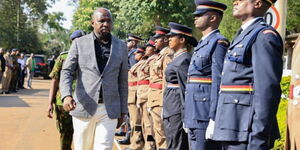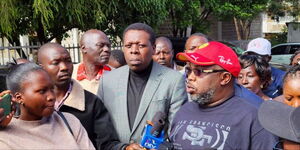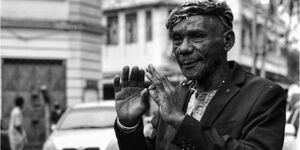Meru National Park, in the 1960s, was one of the world's most famous places, thanks to a book, Born Free by Joy Adamson.
The book, rife with emotions and fond memories, was critically acclaimed as 'detailing what scientists had for a long time thought impossible, the harmonious existence between man and beast, and also the idea that a wild cat could be rehabilitated into the wild even though it had been raised by humans.'
The main character is the most memorable and is not human, but a roaring mass of flesh and fur that left indelible footprints in the lives of those who came into contact with it.
Elsa was a lioness brought up by game warden, George Adamson and his wife Joy Adamson, along with her less famous sisters, Big One (lioness) and Lustica (lioness) after they were orphaned at only a few weeks old.
Fate thrust Elsa and her sisters into the limelight on February 1, 1956, after George was forced to kill their mother when she charged at him in defence of her cubs.
The other cubs, larger than Elsa, were passed on under the care of a zoo in Rotterdam, Netherlands, and the smallest, Elsa, was raised by the couple.
Determined to teach Elsa to survive on her own, they tried their level best to feed her as any lion mother would, hunting and bringing the catch and getting the growing cub to tear into it herself.
Everywhere they went, Elsa did too.
A report by BBC Wildlife reads that Joy referred to Elsa as “a clumsy little velvet bag” with “perfect manners”, and that when fully grown, she still fell asleep with Joy’s thumb in her mouth.
The Adamsons eventually released her into Meru National Park, where she made her first kill.
Elsa survived for several years and reared three cubs, before succumbing to a tick-borne disease in 1961.
She died with her head on George's lap at only five years old. She left behind three cubs which reportedly ran rampant in farms, killing livestock and had to be transferred to another park to prevent irate farmers from killing them.
After the death of the cub, Joy Adamson was inconsolable and lost herself in her work, which was mostly art.
From her notes, George's journals and sharp memory, Joy wrote Born Free, following the life and experiences she had with Elsa.
It is stated that she submitted the manuscript to several publishers before it was bought by Harvill Press, part of Harper Collins.
Published in 1960, it became a bestseller, spending 13 weeks at the top of The New York Times' Best Seller list and nearly a year on the chart.
Her story, which was made into successful films and documentaries, inspired thousands of people to become involved in wildlife conservation.
Joy Adamson died on January 3, 1980, just days short of her 70th birthday. She was found in the park murdered, a charge that was eventually tied down to Paul Nakware Ekai, a labourer.
She was buried right next to Kenya's most famous animal, Elsa the lioness.
George Adamson was murdered nine years later, in 1989, and was buried inside Kora National Park, near his brother Terance Adamson.
To this day, tourists visiting Meru National Park ask to be shown where Elsa and her benefactors were buried.
Some documentaries about the Lioness include Elsa the Lioness (1961), Born Free (1966), Living Free (1972) and Elsa's Legacy: The Born Free Story (2010).












